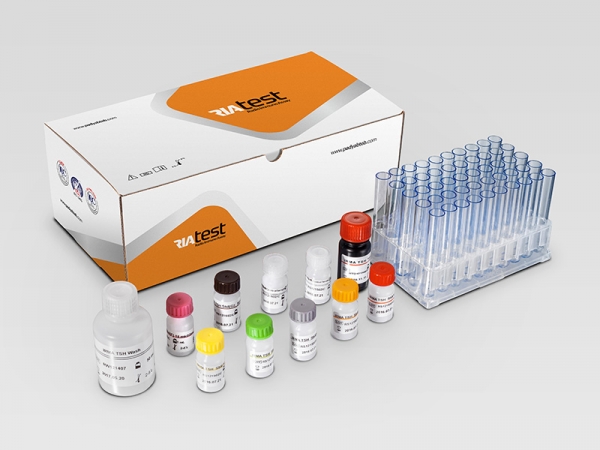| Name | Prolactin (PRL) RIA Test |
| Full name | Human Prolactin (PRL) RIA Test Kit |
| Category Name | Fertility RIA kits |
| Test | 100 |
| Principle | Immunoradiometric assay |
| Detection Range | 0-200 ng/mL |
| Sample | 25 µl Serum |
| Sensitivity | 0.022 ng/mL |
| Total Time | ~80 min |
| Shelf Life | 45 Days from the manufacturing date |
Prolactin (PRL) RIA kit description:
The Diagnostic Automation PRL RIA test kit is for the quantitative determination of human Prolactin (PRL) concentration in human serum
Materials provided with PRL RIA Test Kit:
1. Coated Tubes: Anti –PRL monoclonal Antibody (100 tubes)
2. Anti- PRL monoclonal antibody Labelled with I 125 (Tracer I125)
3. PRL test reference standard set, contains 0, 2.5, 5, 25,50, 100, 200. ng/mL, ready for use
4. Control serum: PRL in serum with preservatives(1Vial, 1 ml)
Materials Required, not Provided:
1. Precision pipettes
2. Distilled or deionized water
3. Gama counter
Introduction
Prolactin (PRL) is a polypeptide hormone with a molecular weight of 23 kDa that is synthesized and secreted by anterior pituitary lactotroph cells. Prolactin synthesis and secretion is regulated by the TRH (thyrotropin-releasing hormone) hypothalamic hormones that stimulate the production of prolactin and dopamine as an inhibitor.
Prolactin is present in the plasma of healthy males and females and in several body fluids like cerebrospinal fluid, semen and amniotic fluid. The primary physiologic function of prolactin is to stimulate breast development and milk production in pregnant women. During the third trimester of pregnancy, prolactin levels increase markedly and this increase remain elevated after delivery as long as nursing continues. Nursing stimulates the secretion of prolactin, which in turn provides for continuous milk production and for delayed resumption of menses. High levels of prolactin are associated with galactorrhea (milky nipple discharge) and amenorrhea (abnormal absence of menstruation) in this normal physiologic function. In the absence of pregnancy, the triad of hyperprolactinemia, galactorrhea, and amenorrhea is suggestive of a pathological process. The most frequent cause of these symptoms is a prolactin secreting pituitary tumor.
Principle of the assay
Immune radiometric assay (IRMA) kit, evaluates PRL based on the one step non-competitive reaction. In this type of assay, the method employs two highly specific monoclonal anti- PRL antibodies which recognize two different epitopes of the molecule. One antibody is coated on solid phase (coated tube), the other, specific for the PRL and labelled with Iodine-125, is used as a tracer. Both of these antibodies react with PRL antigens which are present in standard, control serum and the sample. Unspecific materials are removed in the washing step. The amount of activity form in the tube has a direct relationship to the PRL concentration. PRL standards with known concentrations are tested with the unknown samples in which the concentration of unknown samples is achieved based on the standard curve of the counted amount against concentration of PRL.



